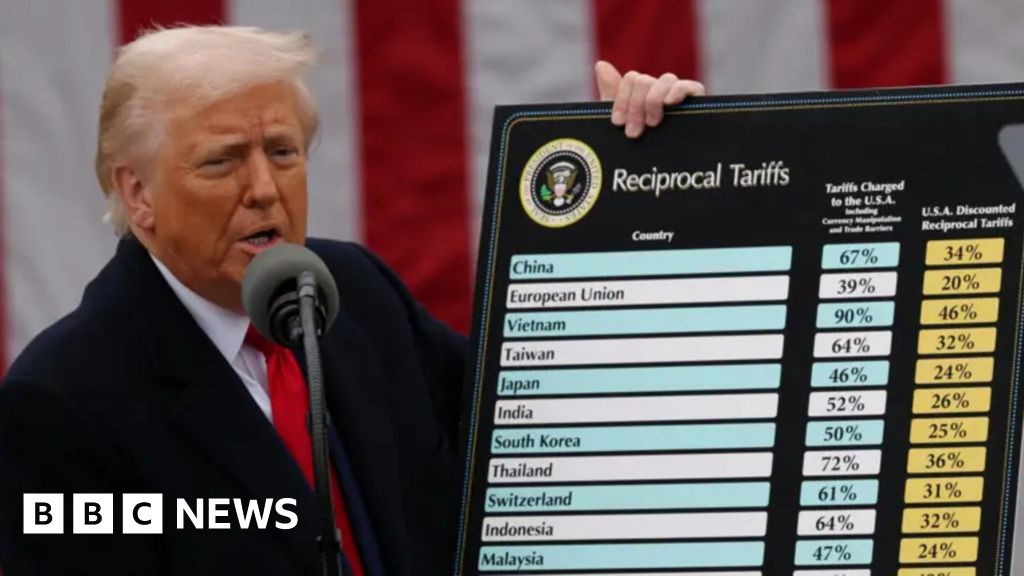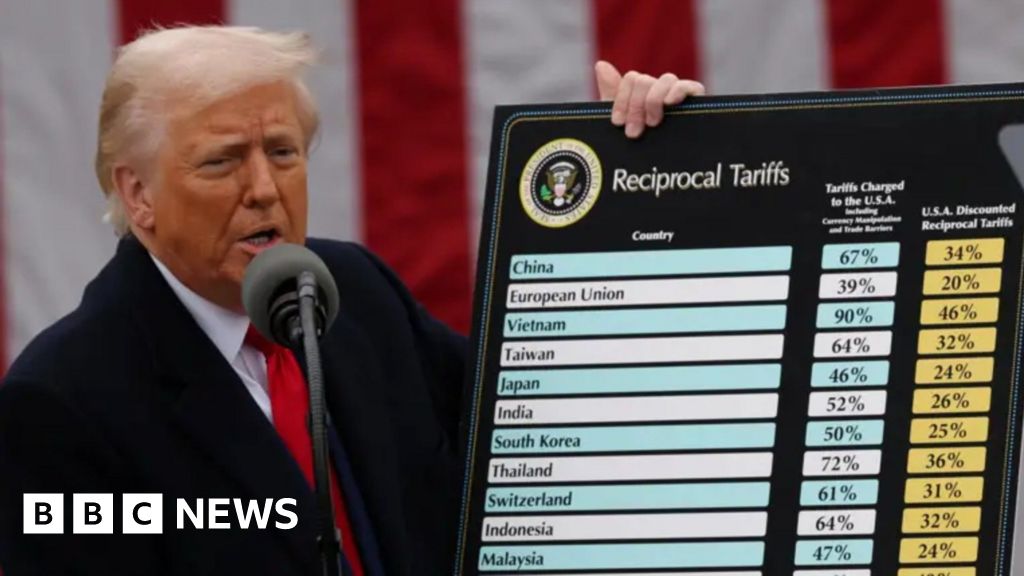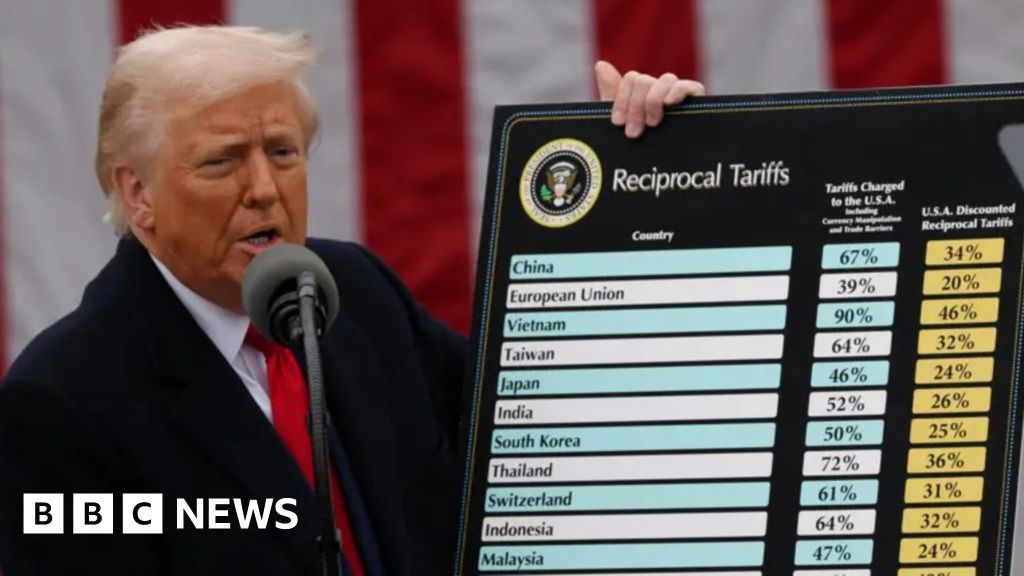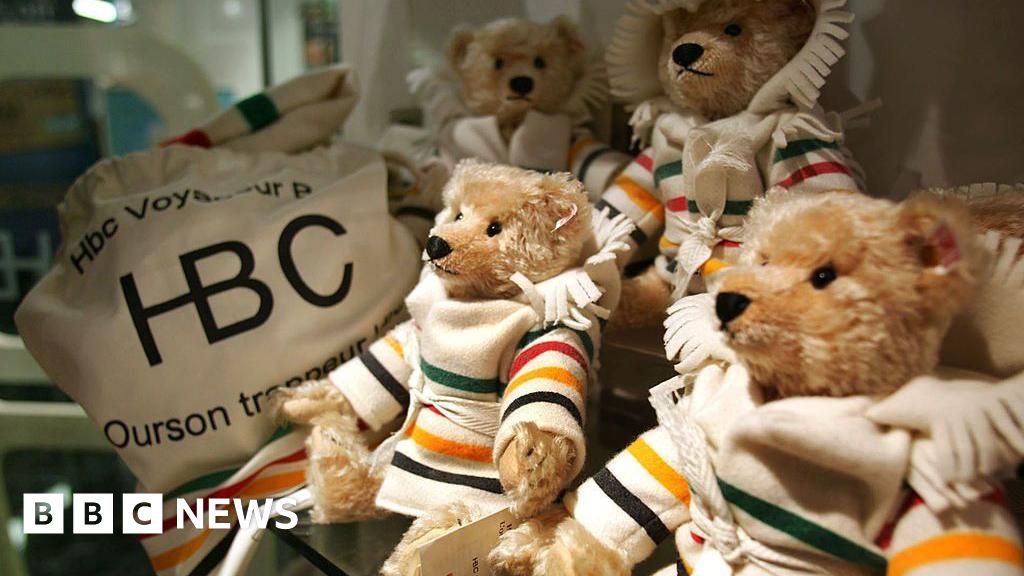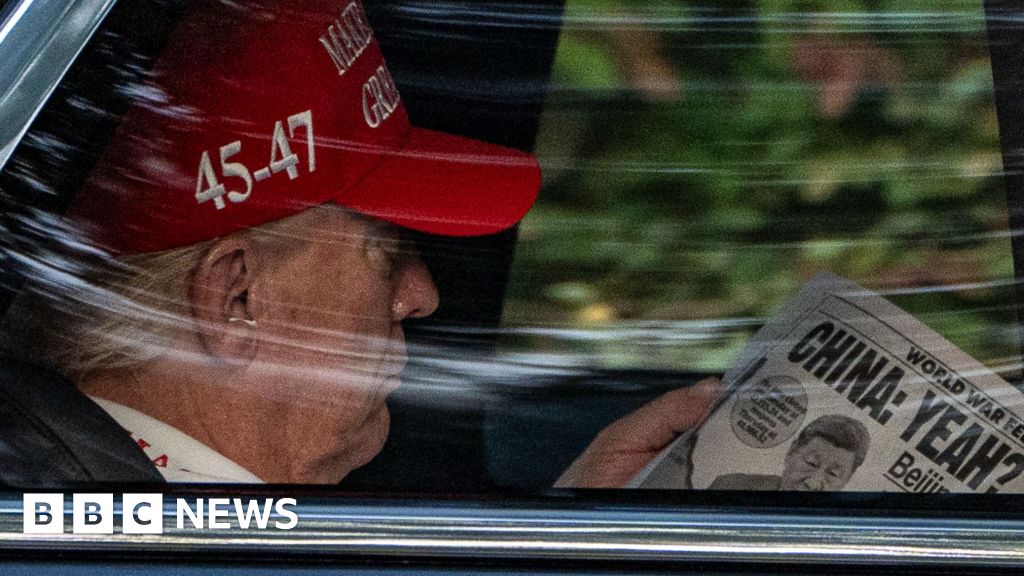BBC News
Reporting fromToronto, Canada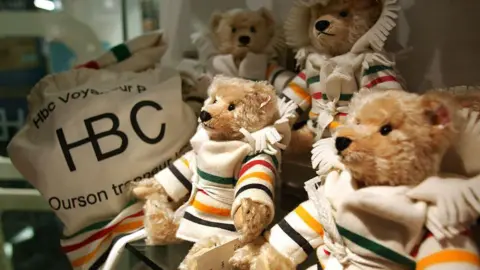 Getty Images
Getty ImagesEven teddy bears wear the HBC stripes
On a bustling weekday in Toronto, Shauna Daniels was out "hunting for stripes".
It's a term she uses for shopping for the iconic – and increasingly rare – coloured stripes that are emblematic of Canada's oldest corporation, the Hudson's Bay Company (HBC).
Sales of HBC's striped merchandise – from handcrafted wool blankets to patio umbrellas – have skyrocketed since the company announced it would be liquidating all of its department stores nationwide.
On eBay, the blankets, which normally retailed for about C$300, were being sold for over C$1,000 ($710; £540).
The stripes have become "a symbol and an emblem of a tremendous chapter for the country", Ms Daniels told the BBC while browsing on her lunch break.
"It's emotional," she added, as she recalled going ice skating in the city centre as a child with her parents, and passing by the department store's window displays.
This HBC stripes fever has arrived amid a growing movement to "buy Canadian" in the face of tariffs from the United States, and a surge of national pride in response.
Sales of the merchandise have increased so much since news of the impending closures was announced that the company was able to make good on some of its debts - it owes almost almost one billion dollars to creditors - and keep six stores from liquidating.
Still, 80 Hudson's Bay stores, as well as a handful of Saks Fifth Avenue and Saks Off 5th stores in Canada have gone into liquidation sales.
It's a sorry fate for one of Canada's most recognisable brands.
Founded in 1670, HBC was granted a royal charter to control trade in parts of Canada. The company began trading woolen "point" blankets - made overseas in the Oxfordshire town of Witney - with local indigenous communities.
The blankets themselves were often striped with rich colours – indigo, red, canary yellow and emerald green, said to be popular during Queen Anne's reign, from 1702-1714.
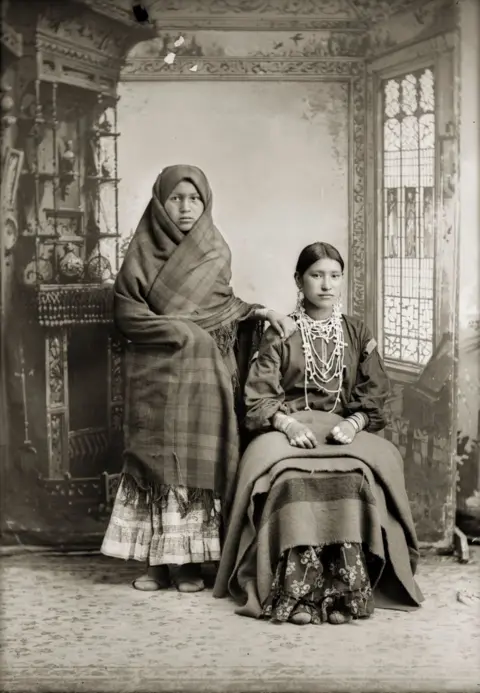 Getty Images
Getty ImagesTwo young Ho-Chunk women from Black River Falls, Wisconsin in 1885. The one on the right has a Hudson Bay blanket in her lap
That history – of colonialism and imperialism – has led some to critique the company's place in Canadiana. But the blanket's stripes endured, becoming a symbol of not just the the Hudson's Bay Company, but Canada's rugged past.
By the time the former British colony had become its own nation, HBC had pivoted from the no-longer booming fur trade, and had opened its first retail store in Winnipeg in 1881.
The company began manufacturing the blankets for mass retail in 1929, and soon the HBC stripes were appearing on a wide range of home décor. Toronto-based interior designer Kate Thornley-Hall has repurposed blankets into her own designs, from pillow cushions to ottomans.
"It's an enduring reminder of the pivotal role that the Hudson's Bay played in the development of our country," she told the BBC.
With branches in every major city, a Hudson's Bay department store became a major attraction. Filigreed stone facades made these stores not just a place to pick up necessities, but a destination for tourists and locals alike.
In 2008, private equity firm NRDC purchased the company, turning this quintessentially Canadian retailer American. But the company's fortunes soon took a downturn, as department stores began to lose ground to online shopping.
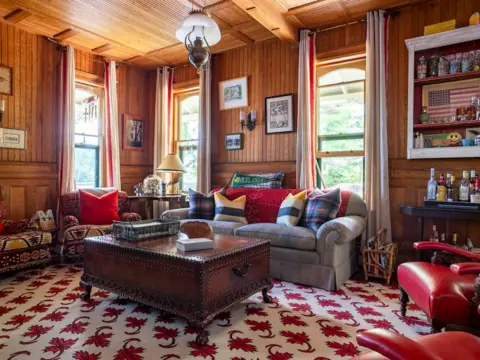 Patrick Biller
Patrick BillerAn interior designed by Kate Thornley-Hall, which features throw pillows made with repurposed vintage Hudson Bay blankets
Retail analyst Bruce Winder told the BBC that the pandemic only accelerated this shift in consumer habits, leaving legacy retailers like Sears, HBC and the American mall struggling to retain shoppers.
"Canadians, if they want to save, they go to places like Amazon or Walmart or Dollarama," he said.
If they want to buy higher-end goods, they are more likely to go to a boutique or directly to a brand's website.
NRDC, which owns Saks Fifth Avenue, also diverted its attention elsewhere, acquiring Neiman Marcus and Bergdorf Goodman in 2024.
Soon, Hudson's Bay was struggling to pay its landlords and suppliers. Trump's looming tariffs also caused its creditors to be concerned about the company's ability to pay them back, Mr Winder said.
Some shoppers hope that the resurgence in demand for the blankets and other stripes merchandise will give the brand a second life.
"I hope that people will again be drawn to shopping and luxury, rather than online fast fashion," Ms Thornley-Hall said.
Analyst Mr Winder thinks that, while the return of the department store is unlikely, there could be space for the company to license its iconic stripes to another company, or open up small, HBC-branded boutiques.
"I think it tells us that the brand has some affinity in Canada, albeit probably with select items, based on their heritage," he said.


